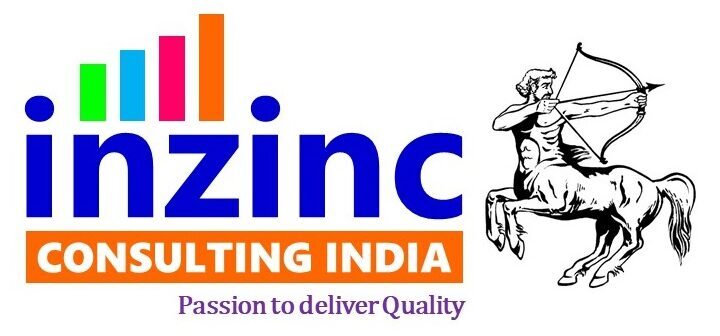Taking Full Potential of ISO 9001 Certification
Introduction
 ISO 9001 is one of the most widely adopted quality management system (QMS) standards in the world. Many businesses pursue ISO 9001 certification to demonstrate their commitment to quality.
ISO 9001 is one of the most widely adopted quality management system (QMS) standards in the world. Many businesses pursue ISO 9001 certification to demonstrate their commitment to quality.
However, the real value of ISO 9001 lies far beyond just getting a certificate. To truly benefit, an organization must use ISO 9001 as a strategic tool for continuous improvement, customer satisfaction, and operational efficiency.
In this blog, we’ll explore how to unlock the full potential of ISO 9001 certification and use it as a powerful engine for business success.
Understanding What ISO 9001 Really Is
ISO 9001 is not just a set of documents or procedures. It is a framework that helps an organization ensure that its products and services consistently meet customer and regulatory requirements. It also helps enhance customer satisfaction through effective process control and continual improvement.
Organizations that treat ISO 9001 merely as a badge of compliance miss the real advantages it can offer. When implemented thoughtfully, the ISO 9001 standard becomes a part of your organization’s DNA.
Integrate ISO 9001 with Business Goals
One of the most common mistakes is to treat ISO 9001 as a separate, standalone system. In reality, it should be integrated into your overall business strategy. This means aligning your quality objectives with your business goals, whether they are related to customer retention, cost reduction, or market expansion.
For example, if a company wants to improve customer loyalty, ISO 9001 processes such as feedback collection, root cause analysis, and corrective action can help identify patterns and proactively address customer pain points.
Focus on Process-Based Thinking
ISO 9001 encourages a process-based approach. Instead of managing departments in isolation, it promotes understanding how different functions interconnect and affect one another. Mapping out your key processes—like sales, purchasing, production, and delivery—helps reveal bottlenecks, duplication, or inefficiencies.
By applying ISO 9001 principles, businesses can improve workflow, reduce delays, and enhance cross-functional collaboration. It’s not just about compliance—it’s about clarity and control.
Involve People at All Levels
Another way to maximize ISO 9001’s value is by involving employees at all levels of the organization. When people understand how their role contributes to quality and customer satisfaction, they become more engaged.
For instance, frontline staff might have ideas to streamline customer handling, while production staff may know ways to reduce defects. ISO 9001 promotes a culture of participation, responsibility, and ownership.
Encourage teams to suggest improvements, report non-conformities, and take part in internal audits. This not only enhances performance but also builds a proactive quality culture.
Use Data to Drive Decisions
ISO 9001 requires organizations to measure performance and make decisions based on data. This is a powerful principle. Regularly reviewing key performance indicators (KPIs) like customer complaints, product rejection rates, or delivery timelines allows management to make informed decisions and prioritize actions.
Instead of reacting to problems, businesses can prevent them through trend analysis and preventive action. Over time, this data-driven approach leads to reduced costs, better customer satisfaction, and improved reputation.
Keep the System Alive
One of the challenges many companies face is keeping the ISO 9001 system active after certification. It’s easy to fall into the trap of preparing only for the annual audit and ignoring the system the rest of the time. This defeats the purpose of ISO 9001.
Make sure that internal audits are conducted regularly, management reviews are meaningful, and continual improvement is part of everyday work. Only then can ISO 9001 deliver long-term value.
If your team lacks the expertise to maintain or improve your QMS, you can seek ISO 9001 Consulting help. Expert consultants can provide guidance, training, and support to keep your system robust and aligned with your goals.
Leverage the ISO 9001 Certification
Once you’ve earned the ISO 9001 certification, use it wisely. Mention it in your proposals, brochures, and marketing materials. Customers and partners often view ISO 9001 as a sign of professionalism and reliability.
But more importantly, let the certification be a trigger for internal pride and external trust. It shows that you care about quality and are committed to continuous improvement.
If your organization is looking to achieve ISO 9001 certification, you can explore ISO 9001 Certification help to get started the right way.
Conclusion
ISO 9001 certification is not an end—it’s a beginning. It is a tool that can transform how you manage your business, engage your team, and satisfy your customers. But like any tool, its value depends on how well you use it.
Treat ISO 9001 as a living system. Align it with your business, focus on processes, involve people, use data, and keep improving. When used to its full potential, ISO 9001 doesn’t just help you pass audits—it helps you build a stronger, smarter, and more successful organization.
